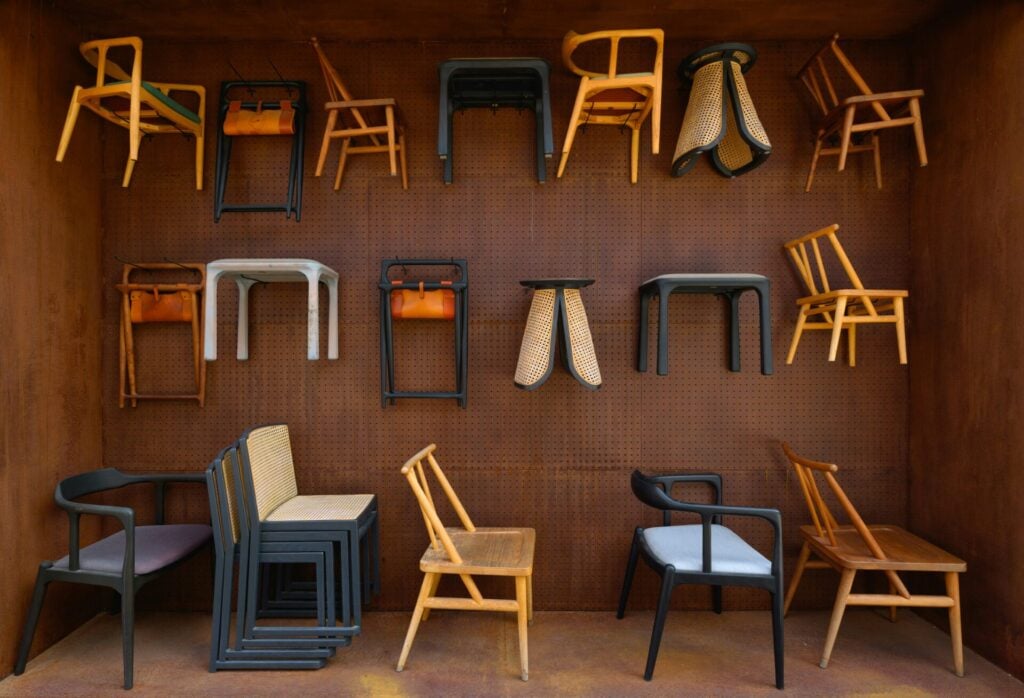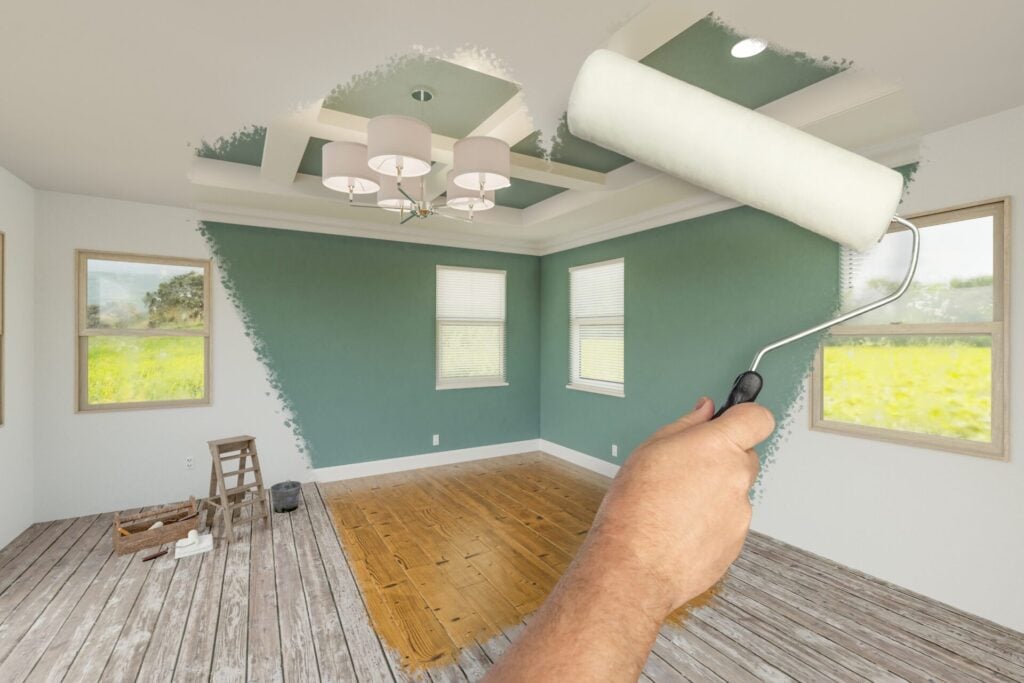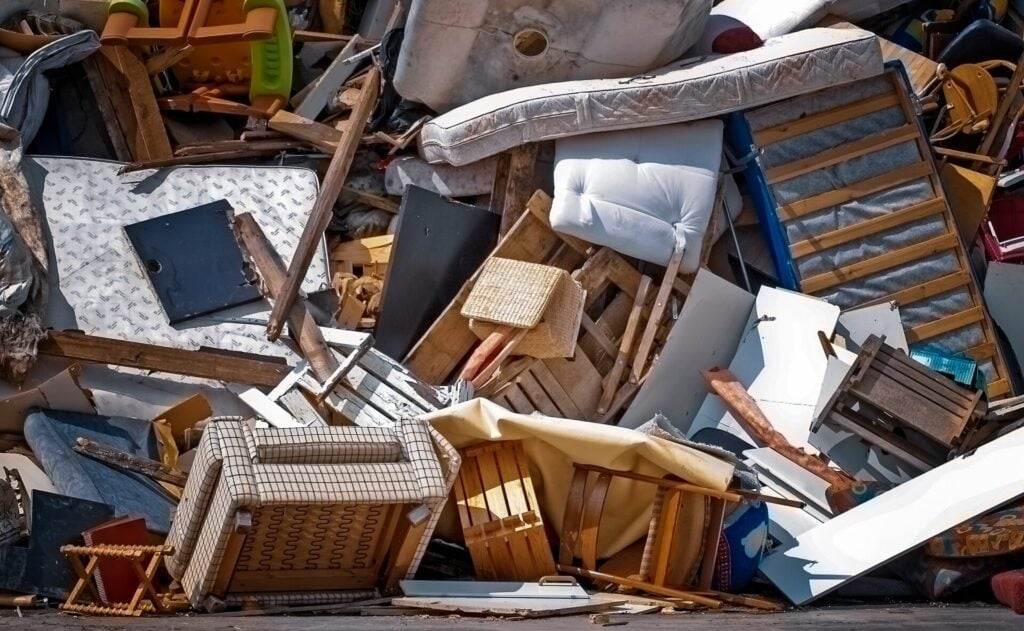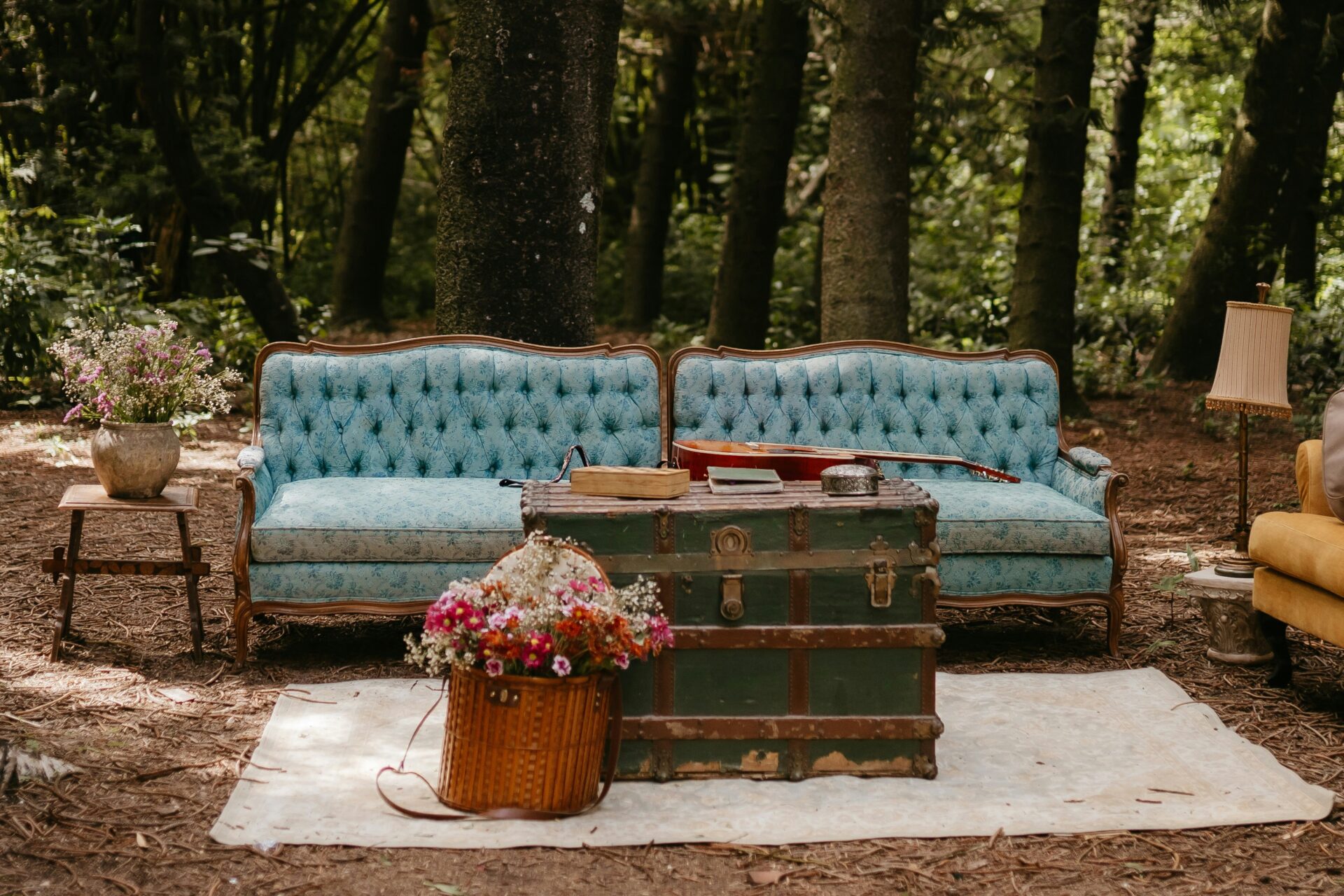We’ve all been there: nipped into the supermarket to get a few bits for dinner, come out with a cushion, a candle and a possibly photo frame to match. Or, seen a seasonal display in a shop window while out buying lunch and decided that yes, what we really need in our life is a St Patrick Day themed mug. These impulse buys may seem harmless, but they’re part of a much bigger problem, the rise of fast furniture and disposable homeware that’s filling our homes (and landfills) faster than we can keep up.
Still enjoying that cushion, candle and photo frame a year later? Great! Look forward to getting that four-leaf clover mug out every March. It’s more likely, however, that those items are long gone, perhaps donated to a charity shop but probably binned because they soon faded, tarnished or broke (or because the candle actually gave off a chemical laden odour of smoky crisps when you lit it).
‘Buy cheap, buy twice,’ as your granny always said, but resisting the allure of these very cute, very low-price tchotchkes isn’t easy. The homewares market has exploded over the last decade or so with popular high street and online retailers launching interior ranges. Some have even opened dedicated bricks-and-mortar home stores.

This trend emerged as we as consumers have become much more aware of the environmental issues surrounding fast fashion. We’re questioning how a brand can offer an item of clothing for less than the price of a coffee, but do we ever ask the same about an item for our homes? Is it time that we started to think about ‘fast furniture’?
Fast furniture mindset
The comparison with clothing is apt, according to Katie Treggiden, a sustainable design journalist and nature-informed coach and facilitator. ‘Furniture has followed fast fashion and trend cycles are now ridiculously quick, with magazines encouraging us to refresh their interiors every season,’ she says. ‘The rise of social media has made our interiors more performative than ever, with how they look on-screen all too often given precedence over how they work and feel in real life.’
‘Homewares used to be things you saved up for, treasured and maybe even squabbled over in wills… We’ve gone from ‘buy it once and pass it down’ to ‘buy it now and bin it next year because it’s peeling/falling apart/out of fashion.’
Tara Button, author of A Life Less Throwaway: The Lost Art of Buying for Life
A similar disposable mindset of fast furniture has emerged as a result. ‘The throwaway culture has well and truly moved into our living rooms – and our kitchens, bedrooms and even our bathrooms,’ says Tara Button, author of A Life Less Throwaway: The Lost Art of Buying for Life and founder of Buy Me Once, a website dedicated to long-lasting products.

‘Homewares used to be things you saved up for, treasured and maybe even squabbled over in wills. Now, they’re designed to be replaced as often as your socks (and in some cases, they don’t last much longer either). We’ve gone from ‘buy it once and pass it down’ to ‘buy it now and bin it next year because it’s peeling/falling apart/out of fashion.’
The impact of overconsumption
This shift matters because, like fast fashion purchases, fast furniture items have an impact on the environment at every stage of their lifecycle. ‘Making new furniture involves taking resources from the planet – and the faster replacement cycles move, the more resources we take,’ says Treggiden. Creating products from these resources also has an effect as ‘almost everything we make generates carbon dioxide, which contributes to climate change.’
In our current linear economy, which follows a take-make-waste model, the problems don’t end there. ‘We generate waste throughout the make process and at the end of life,’ adds Treggiden. ‘Again, the faster trend cycles move, the more waste we generate. We are running out of space for all the rubbish we have generated, it is polluting land and sea, and it generates carbon dioxide as it decomposes.’

Even recycling isn’t usually an option. ‘Firstly, many of the items consist of mixed materials that need separating, and if you haven’t properly separated the materials, they can’t be recycled,’ explains Katryn Furmston, a postgraduate researcher at Nottingham Trent University, UK, specialising in sustainable furniture. ‘Secondly, the process of recycling can often downgrade the materials, making them worse quality and less useful.’
Furthermore, says Furmston, ‘The idea of being able to just throw away items, even if it is in the recycling, is part of the problem contributing to the overconsumption of home decor. We justify the action by telling ourselves that if it can be recycled, it doesn’t matter how much we buy or use because it’ll just be recycled into something else.’
Mindful alternatives
As with the fast fashion industry, to fully address these issues would involve systemic change. ‘What we need is a circular economy, where we design out waste and pollution, keep materials and objects in use and regenerate natural systems,’ says Treggiden.
While such widespread reform isn’t likely anytime soon, there are alternative options that make kitting out our homes easy and even enjoyable while still minimising our use of fast furniture and disposable homewares. These options can even be more affordable too; as Treggiden notes, ‘Second-hand furniture often offers higher quality at lower prices.’
If you want to shop more mindfully for your home, here are Button’s top ten tips to avoid falling into the fast furniture trap:
Buy once, buy well
Choose timeless, durable pieces made from solid wood or metal – materials that age gracefully, not fall apart like a wet digestive.
Do the wiggle test
Before buying, give the furniture a good shake. If it wobbles like Bambi on ice, it’s probably not built to last.

Go vintage or pre-loved.
Hunt for gems on resale platforms or local charity shops. You’ll find character, quality and bragging rights – all in one.
Ask about repairability
Can it be fixed if something breaks? Are parts replaceable? If not, it’s probably destined for landfill limbo.
Steer clear of the flat-pack trap (unless it’s exceptional)
Some flat-pack brands make quality stuff, but many are just pieces of fast furniture engineered for obsolescence. Check reviews, warranties and materials.
Support sustainable brands
Look for transparency around sourcing, longevity and take-back schemes. Bonus points if they offer a warranty that’s longer than your last relationship.

Get comfy with a bit of DIY
A loose leg or scuffed top doesn’t mean it’s rubbish. YouTube is full of gentle repair guidance, and nothing says ‘hero’ like saving a chair from the skip.
Treat your furniture like a long-term housemate
Clean it, oil it, reupholster it. Furniture love is real and it pays off.
Resist trend-chasing
That fast furniture neon boucle pouffe might be all over Instagram now, but ask yourself: will I still love this when the algorithm moves on? Find your own style and enjoy it to the max.
Pass it on
If something no longer fits your space or style, rehome it. Freecycle, sell, gift – just don’t let it rot on the kerb.









